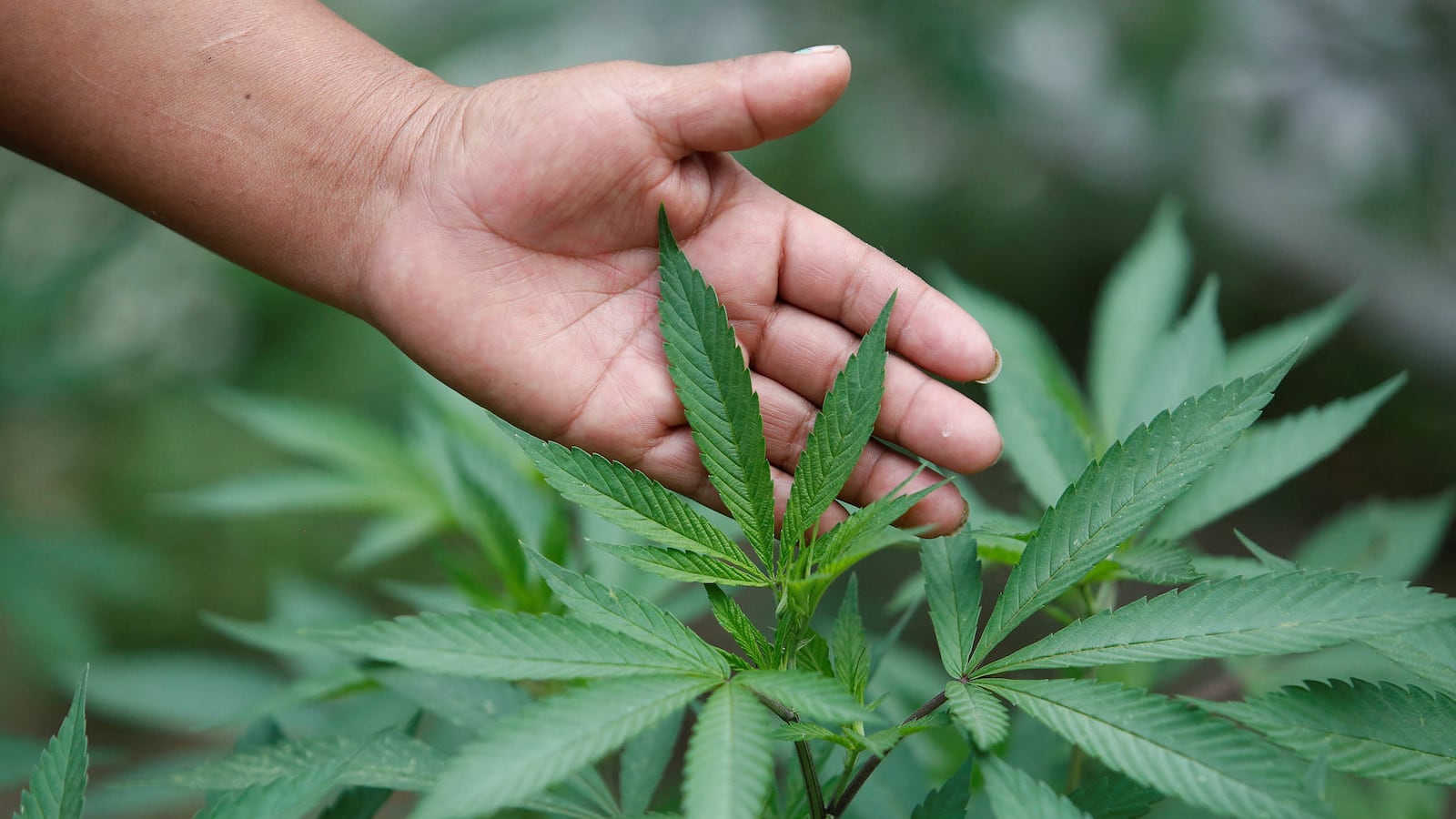The Drug Enforcement Administration teased an “announcement” about the classification of marijuana today at 11 a.m., an uncharacteristically transparent move for the tight-lipped agency.
But hopes of change were quickly vanquished as an old familiar refrain echoed across the internet: The DEA will “affirm its prohibition.” The “big reveal” is nothing more than the decision to reduce some barriers to research—every bit the blow it seems.
With marijuana legal for medicinal purposes in 26 states and recreationally in four, it may seem that the U.S. is already beating the war on drugs, but state laws bypassing a federal one do not a legal drug make. The DEA currently considers marijuana a Schedule I substance, its strictest classification. Paired alongside heroin and LSD, it’s deemed a lethal drug with a “high potential for abuse,” and “no medicinal value.”
As such, testing it on humans—the only way to prove this classification wrong—is all but impossible. Removing some obstacles to this may advance research, but even studies of legal substances take years. In the interim, people of color will continue to be prosecuted at higher rates for pot, and people with ailments that could be treated with the drug may still not have access.
Reclassifying marijuana to a Schedule II substance alongside oxycodone and methadone—the conclusion many hoped for—would have been a huge win. Upholding the 30-year prohibition of pot instead isn’t a novel move for the DEA, but it stings more when you’ve briefly tasted freedom.
Paul Armentano, deputy director of the National Organization for the Reform of Marijuana Laws (NORML), explains why.
“The federal regulations have made clinical investigations involving cannabis needlessly onerous and have placed unnecessary and arbitrary restrictions on marijuana that do not exist for other controlled substances,” he says. “Ample scientific evidence already exists to remove cannabis from its Schedule I classification and to acknowledge its relative safety compared to other scheduled substances, like opioids, and unscheduled substances, such as alcohol.”
It’s not the first time the DEA has flatly rejected petitions to reclassify marijuana, the first of which was filed in 1972, another in 1988, and a big one in 2002. The current strike-down springs from two recent petitions—one filed in 2009 by a nurse practitioner and another in 2011 by the governors of Washington and Rhode Island.
Despite rejecting the chance to reclassify the drug, the announcement will not come without any positive changes. Armentano and others say the agency will be loosening its grip on some of the roadblocks to research (which, of course, could also be achieved by reclassifying it). This will likely involve lifting the National Institute on Drug Abuse’s monopoly of research-grade medical marijuana, which admittedly is a big win.
In the current legal landscape, getting approval to test cannabis on humans is something that few attempt to do—and even less succeed. In the last two decades, only two researchers in America have gotten a green light. Even writing the grant itself requires getting funding to study a drug that is federally illegal, a huge hurdle. Next you need approval from the DEA, Department of Health and Human Services, and NIDA—a major undertaking.
The latter’s approval is crucial, as it manages the only plot of land in the U.S. dedicated to growing research-grade marijuana, located at the University of Mississippi. The supply is not only low, but contains less-than-optimal strains of marijuana for research that rests on the caliber of just that. That is what the DEA is likely to change Thursday.
Perhaps the greatest example of how difficult it is to study marijuana on humans at this point is the story of Sue Sisley, a researcher who won approval to study it in 2014, only to be fired from the University of Arizona where it was to be carried out. Sisley’s project involved testing the drug on veterans with post-traumatic stress disorder, a debilitating condition and one of the leading causes of suicide in that demographic.
It took Sisley nearly two more years to find another place where she could perform the study with NIDA’s approval, and plans didn’t begin until this April. With roughly 20 veterans committing suicide each day, that could be 16,000 men and women who have died since she won the $2 million to study it.
So although loosening the restrictions on the supply itself may be a step forward, it’s not exactly the historic announcement that everyone was hoping for. There are many fallouts to upholding the criminal status of the drug, specifically those prosecuted. Changing the research process will do nothing to curb the thousands of arrests that happen each year for marijuana violations.
Despite the changing legality of cannabis, arrests nationwide continue to rise, specifically among minorities. According to a report from the American Civil Liberties Union, black men and women are three times more likely to be arrested for marijuana possession as whites. Arrests for marijuana rose 30 percent in New York from mid-2015 to 2016, just 9 percent of which involved white people—despite research showing that blacks and Hispanics use marijuana in equal numbers.
Refusing to lift the strict status that allows police to prosecute marijuana violators is nothing short of devastating for the families of those affected. That’s not to mention people who now struggle—and will continue—to get access to medical marijuana to treat conditions that it has been shown to virtually cure, such as wasting syndrome (from HIV) and childhood epilepsy.
For drug experts nationwide, Thursday’s declaration is a disappointment of huge proportions.
“The DEA’s refusal to remove marijuana from Schedule I is, quite frankly, mind-boggling,” Mason Tvert, executive director of the Marijuana Policy Project, told The Daily Beast. “It is intellectually dishonest and completely indefensible. Not everyone agrees marijuana should be legal, but few will deny that it is less harmful than alcohol and many prescription drugs. It is less toxic, less addictive, and less damaging to the body.”
Armentano, for one, hopes that Congress will use the opportunity to amend the status, which it has the power to do. “Ultimately, the federal government ought to remove cannabis from the Controlled Substances Act altogether in a manner similar to alcohol and tobacco,” he says. “Thus providing states the power to establish their own marijuana regulatory policies free from federal intrusion.”
Failure to do so continues the federal government’s “flat Earth” position, says Armentano. “It willfully ignores the well-established therapeutic properties associated with the plant and it ignores the laws in 26 states recognizing marijuana’s therapeutic efficacy.”
While Armentano does commend the decision to change the research status, Tvert—who helped author Amendment 64, which legalized recreational cannabis in Colorado—is less impressed. “The DEA’s announcement is a little sweet but mostly bitter,” he says. “Praising them for it would be like rewarding a student who failed an exam and agreed to cheat less on the next one.”
Editor's Note: The original version of this piece misidentified methamphetamine as a Schedule I substance. In fact, it is Schedule II.






